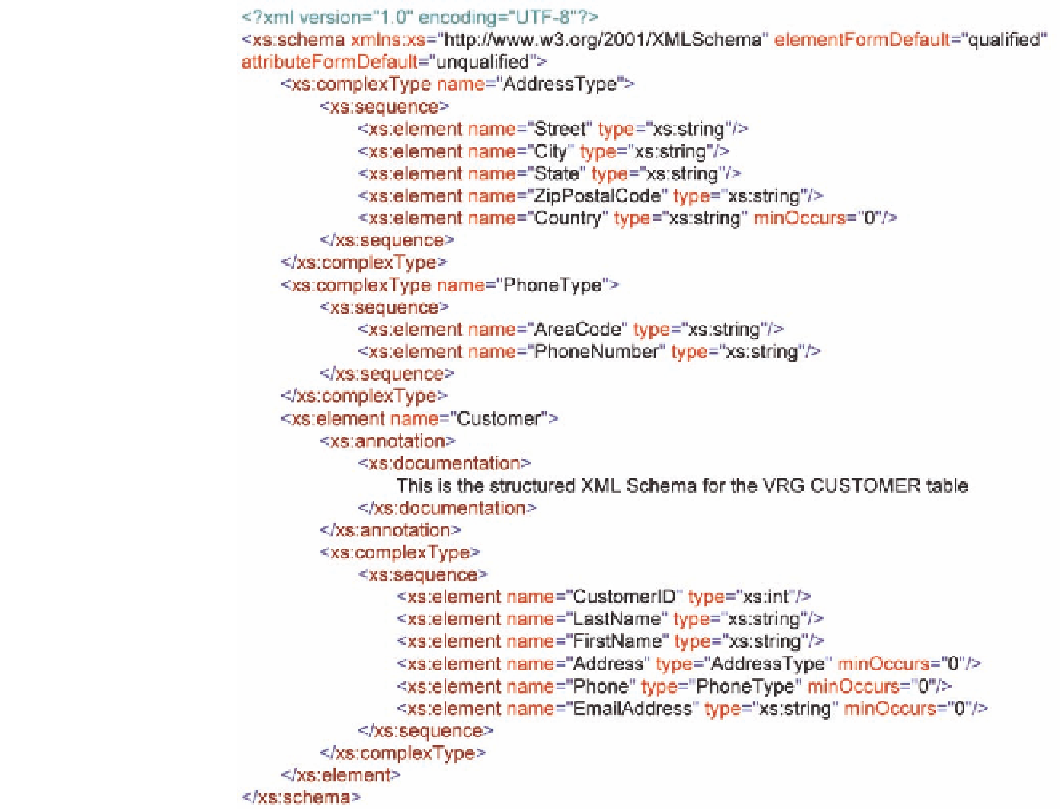Database Reference
In-Depth Information
"[POYHUVLRQ HQFRGLQJ 87)"!
&XVWRPHU
[POQV[VL
KWWSZZZZRUJ;0/6FKHPDLQVWDQFH
[VLQR1DPHVSDFH6FKHPD/RFDWLRQ
&?LQHWSXE?ZZZURRW?'%3?95*?'%3H)LJXUH$[VG
!
&XVWRPHU,'
!
&XVWRPHU,'
!
/DVW1DPH
!
-DQHV
/DVW1DPH
!
)LUVW1DPH
!
-HIIHU\
)LUVW1DPH
!
6WUHHW
!
:(OP6W
6WUHHW
!
&LW\
!
5HQWRQ
&LW\
!
6WDWH
!
:$
6WDWH
!
=LS3RVWDO&RGH
!
=LS3RVWDO&RGH
!
&RXQWU\
!
86$
&RXQWU\
!
$UHD&RGH
!
$UHD&RGH
!
3KRQH1XPEHU
!
3KRQH1XPEHU
!
(PDLO$GGUHVV
!
-HIIHU\-DQHV#VRPHZKHUHFRP
(PDLO$GGUHVV
!
&XVWRPHU
!
Figure 11-52
Continued
(c) Schema-Valid XML Document
Such schemas are sometimes called
structured schemas
because they add structure to
table columns. Such a model captures additional user meaning, so it is superior to the rela-
tional model from a descriptive standpoint.
Note that in this structured XML Schema, Address and Phone remain as optional
(NULL values allowed) in Customer. This maintains the optional status of these columns
Figure 11-53
Example of a Structured
Schema
(a) Structured XML Schema






Search WWH ::

Custom Search